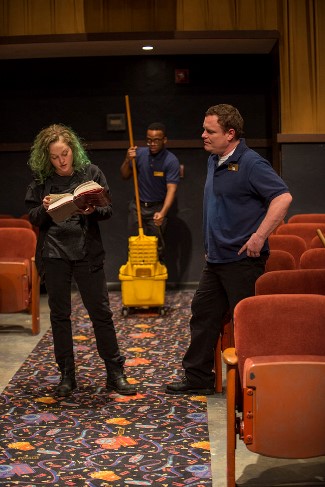
In 2012, when I was between gigs, I picked up a few shifts a week as a projectionist at a struggling movie theater, among the last in the city that had yet to convert to digital projection. It wasn’t an act of principled resistance or anything—the management was just too undercapitalized to acquiesce. I always got paid in cash at the end of the night—often in the manager’s office, in the dark, with the hours calculated in a hurried whisper. Never before had I held down a job that felt so unashamedly transactional.
The projection booth was grotty from years of neglect. Posters from the early ’90s covered up the stains on the wall. When I started there, the work room didn’t have a real rewind bench. The booth port holes didn’t even have any glass, but the auditorium was so large that no one would’ve heard anything up there anyway, unless a projector fell over.
And then one day, enough money had been miraculously borrowed from banks and scrounged up from couch cushions to buy a digital projector. The projectionists had a few weeks’ warning, but we were never explicitly told we’d be out of a job. I offered to help the manager set it all up, but he told me he’d be fine. Even though he was more a businessman than a cinephile, the manager wasn’t quite ready to let 35mm go. We’d still be running film for some shows and digital for others during the first week, so the projectionists kept their shifts.
I showed up for work on a Friday night, hours after the digital projector had been installed. I peeked inside the theater and saw a meager audience enjoying a Blu-ray screening of Indiana Jones and the Temple of Doom. I found the manager at the concession stand and asked how the afternoon had gone.
“Great,” he beamed, “there’s a movie running right now and no projectionist upstairs!”
